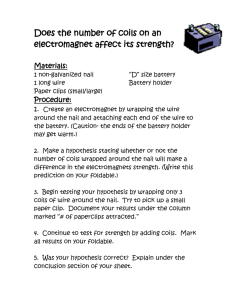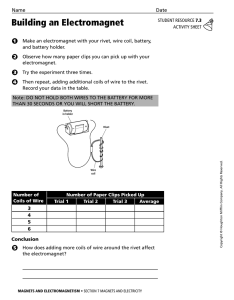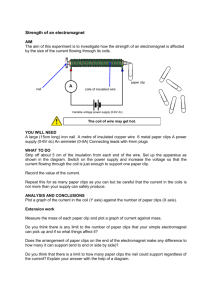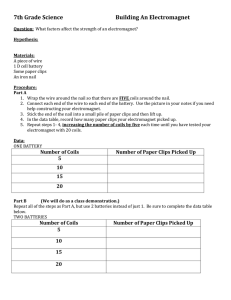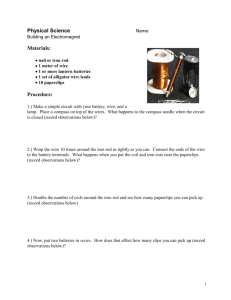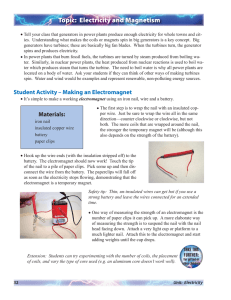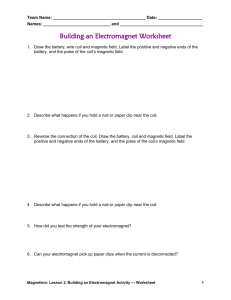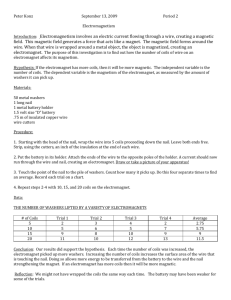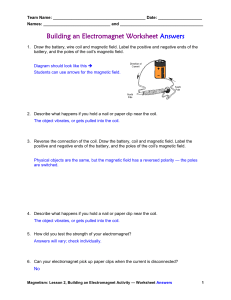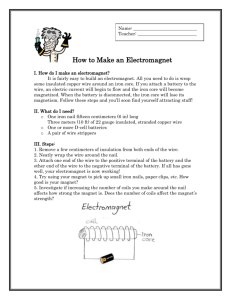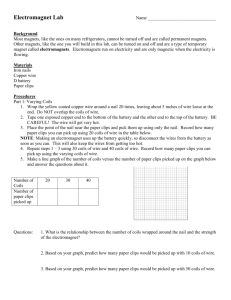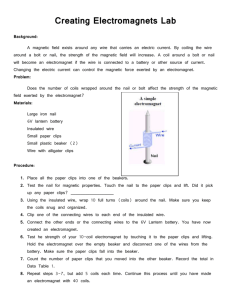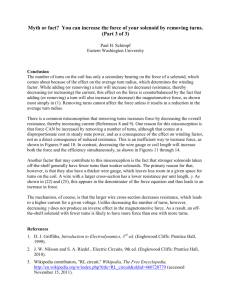Build a better electromagnet
advertisement
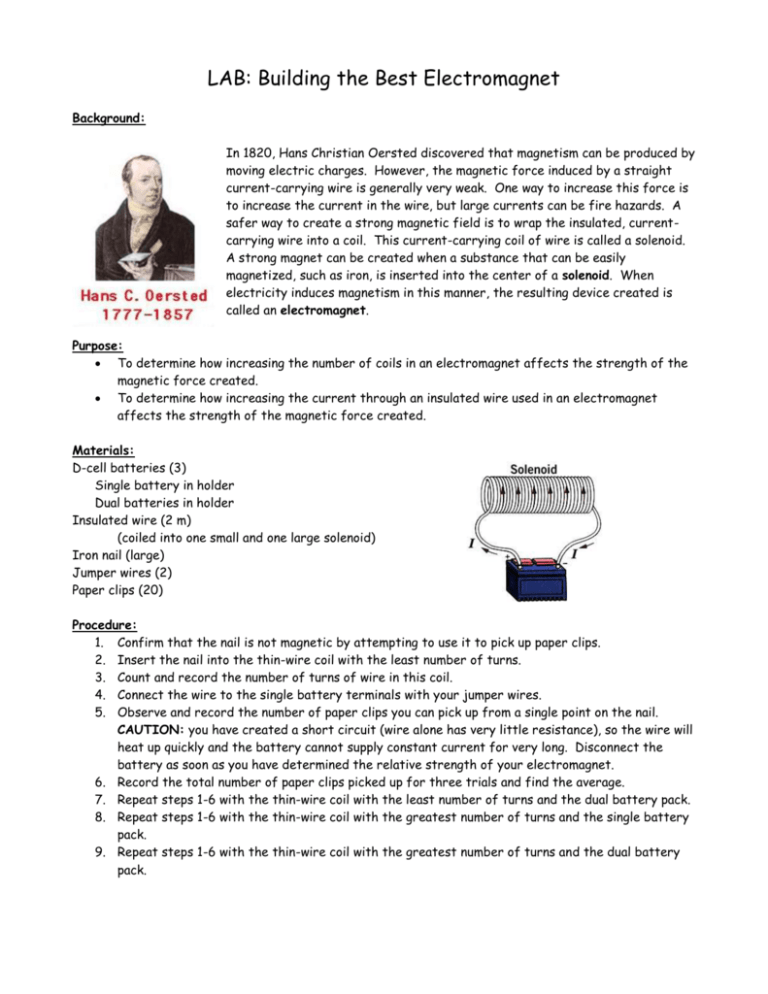
LAB: Building the Best Electromagnet Background: In 1820, Hans Christian Oersted discovered that magnetism can be produced by moving electric charges. However, the magnetic force induced by a straight current-carrying wire is generally very weak. One way to increase this force is to increase the current in the wire, but large currents can be fire hazards. A safer way to create a strong magnetic field is to wrap the insulated, currentcarrying wire into a coil. This current-carrying coil of wire is called a solenoid. A strong magnet can be created when a substance that can be easily magnetized, such as iron, is inserted into the center of a solenoid. When electricity induces magnetism in this manner, the resulting device created is called an electromagnet. Purpose: To determine how increasing the number of coils in an electromagnet affects the strength of the magnetic force created. To determine how increasing the current through an insulated wire used in an electromagnet affects the strength of the magnetic force created. Materials: D-cell batteries (3) Single battery in holder Dual batteries in holder Insulated wire (2 m) (coiled into one small and one large solenoid) Iron nail (large) Jumper wires (2) Paper clips (20) Procedure: 1. Confirm that the nail is not magnetic by attempting to use it to pick up paper clips. 2. Insert the nail into the thin-wire coil with the least number of turns. 3. Count and record the number of turns of wire in this coil. 4. Connect the wire to the single battery terminals with your jumper wires. 5. Observe and record the number of paper clips you can pick up from a single point on the nail. CAUTION: you have created a short circuit (wire alone has very little resistance), so the wire will heat up quickly and the battery cannot supply constant current for very long. Disconnect the battery as soon as you have determined the relative strength of your electromagnet. 6. Record the total number of paper clips picked up for three trials and find the average. 7. Repeat steps 1-6 with the thin-wire coil with the least number of turns and the dual battery pack. 8. Repeat steps 1-6 with the thin-wire coil with the greatest number of turns and the single battery pack. 9. Repeat steps 1-6 with the thin-wire coil with the greatest number of turns and the dual battery pack. Observations and Data: Number of coils in small solenoid:________ Trial # Number of coils in large solenoid:________ Table 1: Number of Paper Clips Picked up by Various Electromagnets Small # of coils Small # of coils Large # of coils Large # of coils One Battery Two Batteries One Battery Two Batteries 1 2 3 Table 2: Average Number of Paper Clips Picked Up by Various Electromagnets One Battery (small current) Two Batteries (large current) Small # of Coils Large # of Coils Small # of Coils Large # of Coils Conclusion: o o o o o o What Summarize the purpose (What were you testing?) Summarize procedure (How did you test it?) State the results (How many paper clips did each pick up? Which configuration was the best, which was the worst? Does this seem right?) Three possible sources of error (unavoidable limitations of the lab) How could be these errors be corrected/fixed? What other variables could be tested? to turn in: Title Purpose Hypothesis Data table(s) Conclusion
